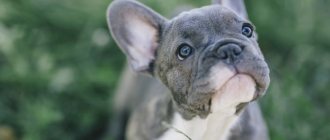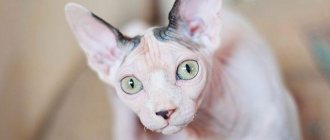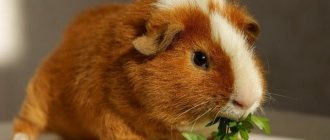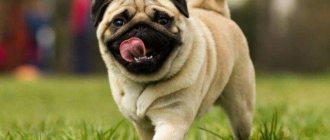Pugs are funny and cheerful companion dogs that have proven their devotion to humans for several centuries. The pug's calling is to love its owners, to be a true friend to both small children and elderly people. That is why the first thing you want to know when you adopt a dog of this breed is how long do pugs live? How many years will these funny pets be around? What should you do to prolong the joy of communicating with your dog? You will find the answer to all these questions in our material.
What affects life expectancy?
This breed is distinguished by good health and a strong physique, so the average age of its representatives is approximately 11-14 years. The lifespan of pugs largely depends on the conditions in which the dog lives.
The main factor is diet. Namely, from its correctness and rationality. Your pet's diet should not contain sweet, fatty or fried foods.
This is important because Pugs are prone to obesity. It significantly reduces life expectancy. The fact is that although such dogs are very cheerful, they can be very slow and store more than they spend.
Also, a significant factor is the anatomical structure of the muzzle. The eyeball may fall out due to the fact that the eye sockets are relatively shallow (compared to the large eye). A dog can receive such an injury during play or a fight, but it can cause complete loss of vision.
Another reason is genetic characteristics. It is possible that some diseases were passed on to the pet from its parents, so it would be a good idea to study the dog’s pedigree before purchasing.
How long do pugs live - statistics and facts
These small decorative dogs are among the ten long-lived breeds. With proper care and the absence of serious genetic pathologies, these pets can delight their owners with their company for a long time. 10% of all representatives of the breed live up to 15 years of age, 20% - up to 14 years.
Average and maximum life expectancy of a pug
A pug has an average life expectancy of 12-15 years. At first glance it may seem that this is not so much. But, when compared with other breeds (Great Dane, Bulldog), whose average life expectancy is 7-9 years, this is an impressive period! Pugs that have crossed the age of 14 are already considered venerable centenarians.
There have been cases in history when the life expectancy of a pug dog was more than 15 years. A long-living pug from the Khanty-Mansiysk Autonomous Okrug named Khali Gali Pickwick Frant is included in the Russian Book of Records. This dog died at the age of 17 years and 7 months.
Previous domestic record-breaking dogs only crossed the 16-year threshold. The dog Zosya from Krasnodar, listed in the Russian Book of Records, was able to live 16 years and 7 months. At the same age, the last champion of the USSR, the dog Martin from Moscow, died in 2006. Martin is famous for being included in the Guinness Book of Records.
Today in America there is an absolute record holder for life expectancy at home - the King Tug pug, who lived for 18 years. There is unconfirmed information on the Internet about pugs who lived 19-20 years. Perhaps world longevity records will soon be broken. And this information about how long pugs live will become irrelevant.
Important: Small representatives of the breed outlive their large relatives.
How many years do female pugs live on average?
To answer the question: “How long do female pugs live at home?”, let’s turn to the research of Stephen N. Austad, head of the biology department at the University of Alabama. He states that in all dog breeds, females live longer than males. Pugs are no exception. Healthy females outlive their male relatives.
It is impossible to say exactly how long female dogs live at home. It depends on their genetic heritage, lifestyle, and diet. But given the calmer nature of females, we can say with confidence that under the same conditions of detention they will outlive the males. Of course, there are exceptions to every rule. Difficult childbirth, frequent pregnancies and long periods of lactation can undermine the health and shorten the life of a female.
How many years do male pugs live at home?
We found out how many years do female dogs live; males live a little less. Although they are born with better health and stronger immunity. The reason for this injustice is that male pugs are stubborn, willful and often get into fights. Fights are always dangerous and pose a threat to life and health! The only thing that can console owners of male pugs is the fact that these statistics are true for all dog breeds.
How to find out the age of a pug?
There are several characteristics based on which you can roughly guess the age of a dog. It will tell us: the condition of the coat, muscles, eyes and teeth.
Wool
With age, pugs' fur becomes dull and loses its silkiness. In some cases, oiliness appears. After the first molt (about 4-6 months), the hair becomes shiny, gains a little stiffness, and the color appears brighter. But at the age of about 7 years, gray hair appears.
Muscles
Young individuals have very strong and elastic muscles, because they do not move more often. Over time, the dog either gets fatter or, conversely, becomes bony.
Eyes
Young pugs' eyes seem to glow. They are shiny and clear. Older dogs have dull eyes. The shine is most often lost.
Teeth
The teeth are a very important point. Looking at their condition, you can relatively accurately determine the age of the pet. In the first months of a dog's life, there is a period during which the body actively grows and develops.
- The puppy is born without teeth, but every month there are more and more teeth.
- On the 25th day, fangs appear, later incisors, milk and molars.
- The change from dairy to indigenous ones usually occurs at 3-5 months of life.
- By the age of one year, all teeth are fully formed and have a white color.
- By the age of two, the teeth already turn yellow and even tartar appears.
- By the age of 4, the teeth wear away and the yellowness is noticeable to the naked eye.
- At 10 years of age the final loss occurs.
Some characteristics of the animal make it very difficult to determine age.
Brief information about the breed
Representatives of this breed are friendly and active. They are also very loyal to their owner and follow him everywhere. They get along well with children, patiently putting up with their pranks, and get along with all pets, such as cats, rabbits, other dogs, and so on.
The Pug is very brave and is one of those small dogs who believe that the best form of defense is attack. Therefore, he will fearlessly rush to protect his owner in case of danger, barking loudly.
Read more detailed characteristics of pugs here.
Table of the age ratio of a pug and a human
| Pug age | Person's age |
| 5-6 weeks | 2 years 6 months |
| 12 weeks | 5 years |
| 6 months | 10 years |
| 9 months | 12 years 6 months |
| 1 year | 16 years |
| 2 years | 24 years |
| 3 years | 28 years |
| 4 years | 32 years |
| 5 years | 36 years |
| 6 years | 40 years |
| 7 years | 44 years old |
| 8 years | 48 years old |
| 9 years | 52 years old |
| 10 years | 56 years old |
| 11 years | 60 years |
| 12 years | 66 years old |
| 13 years | 72 years old |
| 14 years | 78 years old |
| 15 years | 84 years old |
| 16 years | 90 years old |
Diseases and common causes of death in pugs
The life expectancy of these dogs very much depends on the presence of diseases, to which pugs are predisposed due to the characteristics of the breed. Due to their anatomical specificity, the following diseases are distinguished.
Poor circulation
The special structure of dogs' bodies often contributes to poor circulation. This can be seen especially clearly near the femoral head. This gradually leads to muscle atrophy and joint damage. If you are not careful, the pug can get necrosis (tissue death) of the limb, and with such a disease the dog is unlikely to live even to 7 years.
Heart diseases
A congenital disease in a pug is often a “heart defect,” which cannot be prevented, but if detected in time, you will be able to control everything.
Almost all pugs have a rather weak heart. Therefore, it is difficult for pets to tolerate sudden temperature changes and heat. Overly active representatives can even die from cardiac arrest, so during heavy exertion, be more careful to ensure that your pug does not experience shortness of breath. Also try to relieve your pet from stressful situations.
Infections
Various bacteria and fungi have a negative effect on dogs. Being outside, a pug can easily become infected. The wounds your pet receives must be treated immediately, otherwise they may fester. We must not forget that in winter the dog can catch a cold.
Eye diseases
Due to the special shape of the eyeball (bulging eyes lead to a small bony orbit), glaucoma, or chronic keratitis, often develops. The fact is that they literally don't have enough space in their skull.
When the cornea is damaged, pinpoint opacities are visible. This is keratitis, that is, inflammation of the cornea. It also manifests itself as cloudiness, redness, pain or ulcers.
Skin diseases
Bald spots, wet wounds and pimples often appear on the skin of pugs. All of these could be signs of an allergy. Sharp molting occurs due to stress, the appearance of parasites or poor genetics. But the rare presence of pimples in the folds of a dog's muzzle is normal.
Cancer
This disease is a real thief of a pet’s life expectancy. The most common forms are: oral cancer, testicular cancer and lymphoma. Castration is an excellent prevention of genital cancer.
Frequent mistakes of owners
Inexperienced owners often make the following mistakes when caring for a pug:
- incorrect diet;
- do not comply with hygiene rules;
- little physical load or, conversely, excessively.
Every pug owner needs to have an understanding of common diseases and their symptoms in order to provide help to their pet if necessary. Most often, the average life expectancy of a dog depends on health and proper care.
How to increase the lifespan of a pug
To extend your pet's lifespan, you need to properly care for it.
Pugs, by their nature, have some predispositions to certain diseases that are very difficult to avoid. But if a dog receives proper care every day, it can live a long and happy life.
Obesity
Pugs, like most dogs, do not feel much when eating, so it is important to give your pet food only according to a certain diet.
Try to compose it correctly, because overweight pets live much less (5-6 years) than their more athletic relatives. Also, because of this, additional health problems may follow, namely: it complicates the breathing process and puts additional stress on an already weak heart. The diet should contain vitamins A, B, C and E.
Moderate physical activity
While still puppies, accustom your dogs to mandatory regular physical activity in different weather conditions. It is better to increase it gradually, increasing it every week. But don't overload.
Of course, in hot or bitterly cold weather we exclude physical exercise outside. If the pug does not exercise often, this will lead to severe shortness of breath and muscle atrophy.
Inspection
After each walk the animal is examined. Check your pet's eyes, because they are usually quite susceptible to injury, insect bites and dust.
It is also very important to ensure that the pug does not overheat. Don't forget about the vaccination schedule. It is important to pay attention to the slightest change that is uncharacteristic for the animal (lethargy, problems with appetite). Watch your skin carefully. There should be no wounds, bumps or seals on it. Go to the vet whenever possible.
Hygiene
Careful hygiene is the key to a healthy dog, and therefore a condition for a long-lived pug. During hot summer walks, treat the pug's especially deep folds well with an antiseptic. It is important to constantly clean the ears and occasionally the anal glands.
How to extend your pet's life
So, now we know how long the average pug lives. Let's talk about how to extend the life of your beloved pet. What do you need to do to keep this loyal and cheerful dog by your side longer?
Tips for loving owners:
- Monitor your dog's weight. This is the first thing you can do for your pet. Remember that excess weight causes problems with the heart, spine, joints and endocrine system. Don't overfeed your pug.
- Provide adequate, but not excessive, physical activity. With pugs, you don't have to run several kilometers a day. Train them for hours at the dog park. Loads should be moderate but regular. Pugs get tired quickly. But you need to walk with them every day.
- Protect dogs from stress. Pugs are one of the dog breeds that can become seriously ill during stressful situations, even resulting in death.
- Be attentive to dogs in hot and humid weather. Never leave your pets in a closed car in the summer. The peculiarities of the body structure of this breed are such that they experience enormous overloads in the heat and high humidity. Under these conditions, pugs may experience overheating or respiratory failure.
- Watch what your dog eats. Pugs are gluttons and can eat something inedible. Keep household cleaning products, poisons, and chemicals out of reach.
- Carefully and regularly care for your pug's eyes and skin folds. Dirt accumulating between the folds can lead to the development of infectious diseases.
- Make sure your pet has 24/7 access to clean, fresh water. The breed is prone to dehydration. An adult large dog needs to drink 800-900 ml per day. fresh water.
- Do not experiment with swimming in open waters and pools. Pugs are not the best swimmers.
- Provide your pet with a balanced diet. Agree on the daily serving size with your veterinarian.
- Take all your veterinarian's prescriptions responsibly. Take your dog to the doctor regularly for preventative purposes.
All these tips will help you improve your pet's quality of life and prolong its life. Follow them, perhaps your dog can become the next long-lived pug, and you will competently answer the question posed at the beginning of the article: “How many years do pug dogs live?”
Briefly about the main thing
- The lifespan of pugs depends on their diet, genetics and anatomical structure.
- The age of a dog is determined by looking at the condition of its teeth, fur, muscles and eyes.
- Female pugs live longer than male pugs due to their calm nature.
- This breed is susceptible to heart disease, eye disease, circulatory problems, skin diseases, respiratory problems and various infections.
- To increase your life expectancy you need regular activity, hygiene, sensitivity, attention and proper nutrition.
Ways to prolong life
When starting to raise pugs, it is advisable to explore the possibilities of extending the longevity of your pet.
This is interesting: Features of caring for a pug
On average, such dogs live from 11 to 15 years.
To achieve the maximum indicator, several conditions must be met:
- Do not miss vaccination dates, as this allows you to maintain your health at the proper level. At the first symptoms, treat the dog promptly, excluding the development of severe consequences.
- Provide physical activity for your pet. Daily walks are mandatory. Include dogs in games and perform various exercises. With proper organization, it is possible to prevent obesity, possible muscle atrophy, and improve blood circulation. It is important to prevent your pet from becoming overtired.
- Feed at strictly allotted times, choosing the diet recommended by the veterinarian. Exclude treats and food from the table. A natural menu should be drawn up for a week, taking into account its balance and the inclusion of the necessary vitamin and mineral supplements. You can use ready-made food recommended for similar breeds.
- Carry out the necessary hygiene procedures regularly in natural home conditions. Examine the dog after every walk. Treat fresh wounds and scratches. Protect your pet from hypothermia and excessive overheating. Brush regularly and check eyes and ears. Bathe your dog twice a month, carefully care for the folds, which should always be clean and dry.
- Give your pet a lot of attention. Pugs are affectionate animals that need affection from all family members. Dogs need to be petted and hugged. Pets should be allowed to show their devotion and should not be prohibited from licking their hands or face. In a calm, safe environment, dogs live long lives because they rarely experience stress.
A chip implanted under the skin will help keep your pug attractive to thieves. This device makes it possible, if necessary, to prove ownership.











